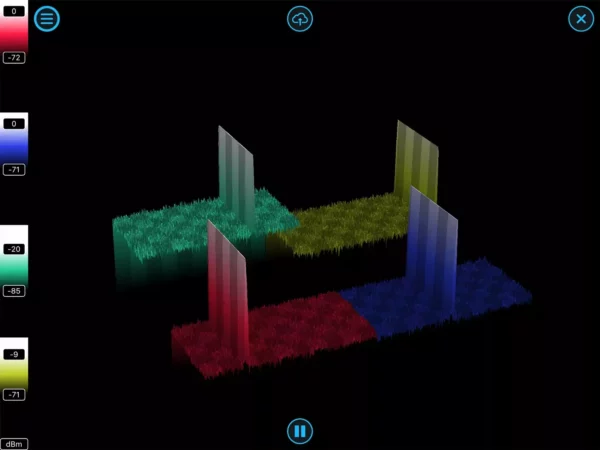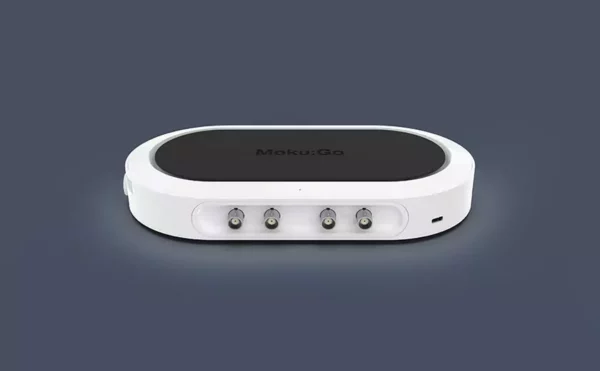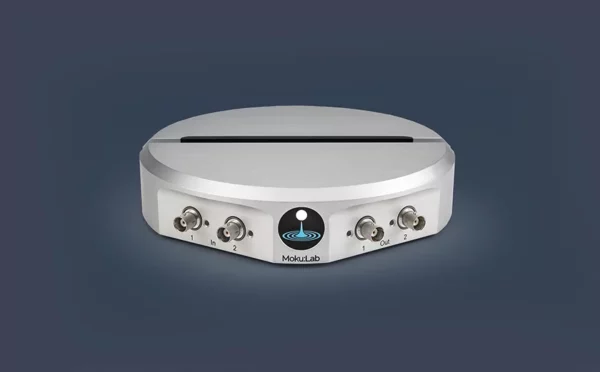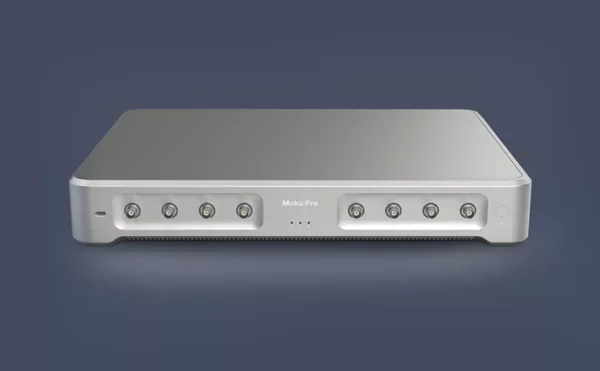Spectrum Analyser
Use the versatile and efficient Moku Spectrum Analyser to observe input signals in the frequency domain between DC and 300 MHz with an ultra-low noise floor. View up to four channels simultaneously with a resolution bandwidth as low as 470 mHz and a minimum span of 100 Hz.
For top performance in a range of applications, the Spectrum Analyser comes equipped with up to four built-in Waveform Generators capable of producing sine waves at up to 500 MHz.
Below is the Spectrum Analyser’s user interface showcasing some of the key features explained below
Key Features of the Spectrum Analyser:
With a hybrid super-heterodyne FFT approach, built-in Waveform Generators, and easy-to-use cursors and measurement markers, you can expect more from the Moku Spectrum Analyser.
Quickly measure key metrics for comprehensive analysis
Use the built-in measurement markers to drag measurement cursors onto features of interest. Probe up to four peaks and view real-time and historical trends for peak level, frequency, power, and more — all at a glance.
Output sine waves with the onboard Waveform Generators
Generate up to four sine waves to conveniently stimulate your device under test. View signals using the analog inputs, and output sine waves simultaneously on the analog outputs.
Optimised for efficiency with the 3D waterfall plot
Use the helpful 3D waterfall view feature to visualize how the spectrum changes over time and analyse your data from multiple angles. With unique data visualization options, you can learn more about your signal through the intuitive graphical user interface.
The evolution of a spectrum can be easily viewed with the 3D waterfall plot, shown below.

Run multiple instruments simultaneously in Multi-instrument Mode
It’s easy to pair the Moku Spectrum Analyzer with up to three other different instruments in Multi-instrument Mode. Route connections to the analog inputs and outputs, or digitally connect instruments together for lossless instrument cabling.
Engineered to work seamlessly with your preferred APIs
API integration with Python, MATLAB, and LabVIEW allows straightforward automation of your Moku device in complex setups or for repetitive tasks. Save your measurements, screenshots, traces, and other settings locally or to your preferred cloud app. You can also send work to yourself or colleagues within the Moku app.
Applications:
- Frequency domain analysis
- System response characterisation
- RF system design
- Spurious signal identification
- Noise measurement


































